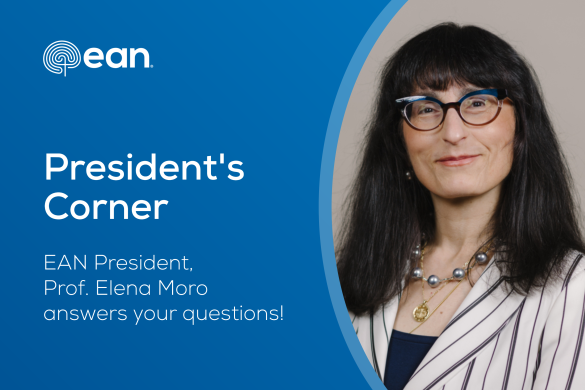
Prof. Marco Medina
President PAFNS – Pan American Federation of Neurological Societies
WFN Regional Director for Latin America
National Autonomous University of Honduras
1. PAFNS is a “young” federation. Kindly illustrate the structure and goals of PAFNS to the EAN Pages readers.
The Pan-American Federation of Neurological Societies (PAFNS) is a “young” Latin Federation created on 15 November 2011 during the 20th World Congress of Neurology in Marrakech, Morocco by virtue of the “Declaration of Morocco” signed by the WFN Latin American delegates and ratified on 5 March 2012 by delegates attending the 13th Pan-American Congress of Neurology in La Paz, Bolivia. The PAFNS is one of the regional organisations of the World Federation of Neurology (WFN). The neurological societies from the following countries have approved and signed the constitution as founding members and active ordinary members: Argentina, Brazil, Bolivia, Chile, Colombia, Costa Rica, Cuba, Dominican Republic, Ecuador, El Salvador, Guatemala, Honduras, Mexico, Nicaragua, Panama, Paraguay, Peru, Puerto Rico, Uruguay, and Venezuela
The main PAFNS goals are to coordinate and support the efforts of the member societies toward improvement of neurological services for the people of the Latin American region, as well as to optimise neurological care, education and research and to promote public health initiatives to increase awareness of the importance of brain health (Medina and Roman 2016)
PAFNS has a permanent secretary in Santiago, Chile. The PAFNS Executive Committee is formed by: Prof Marco T. Medina (Honduras), president; Prof Sergio Castillo (Chile) , Secretary General; Prof Gilmar Prado (Brazil), Vice-president; Prof Eduardo San Esteban (Mexico), Vice-President; Prof. Reynaldo Mustelier (Cuba), Treasurer, and Renee Fellner (Chile) Executive Director.
2. How does PAFNS promote the development of clinical neurology and neurological science throughout the Latin American region?
PAFNS promotes the development of clinical neurology and neurological sciences in the Latin American region through the following objectives: 1) to stimulate and promote the formation and organisation of National Societies of Neurology in the Latin American region, and to promote excellence and international collaboration; 2) To optimise the care of neurological patients in all regions of the Americas; 3) To promote interdisciplinary collaboration with all allied disciplines involved in neurology, including other medical and health sciences specialties, as well as laypersons organisations and support groups for patients with neurological disorders and their families; 4) To promote excellence in clinical research and in neuro-epidemiology as sources of progress respectively inpatient care and in the implementation of effective public health measures; 5) To encourage basic sciences research, particularly in fields that address problems of clinical importance involving the nervous system; 6) To become instrumental as an element of change to improve curricula for teaching of the neurosciences, adapting it to the local pathologies and ensuring the highest educational standards at all levels including elementary school, secondary school, technical and university teaching; 7) To serve as the consulting international entity on topics related to neurology and the nervous system; 8) To strive for optimal moral and ethical professional behaviour of all members of the affiliated neurological societies and for compliance with the constitution and bylaws of the Federation; 9) To support and defend at national and international level the professional practice of neurology in the Latin American region and to strive for the continuing education of all the members of its member societies; 10) To collaborate on preventive programs to control and prevent neurological disorders at local, national and international levels; 11) to maintain and improve the level of public information with respect to neurological diseases in the Americas at local, national and international levels; and 12) to contribute to maintaining brain health and neurological health around the world.
We have established an Education Commission, a Congress Scientific Commission and a Research Commission. Every two years, we organise a Pan-American Congress: in Mexico (2016) with the support of the Mexican Academy of Neurology, in 2018 with the support of the Brazilian Academy of Neurology and we are planning to organise the next Congress in Chile in 2022.
3. As you also mentioned during the leadership meeting, education is the stepping-stone to excellence in neurology. What educational initiatives does PAFNS promote and do these imply an exchange of students among the PAFNS member countries?
PAFNS highlights the importance that neurological education must be tailored for each country and education programs must be organised around individual epidemiological profiles. During recent years, PAFNS, with the support of WFN, promoted neurological education in Latin America by establishing several different strategies: 1) Promoting neurology training programs in each Latin American country; 2) A student exchange program in Mexico City; 3) South-to-south education and research collaboration projects, among others. (Medina and Munsat, 2010)
4. EAN looks forward to working with you and PAFNS. How do you see such cooperation and what would be your main suggestions for this cooperation?
An EAN-PAFNS collaboration agreement in my opinion will be an extraordinary academic opportunity. A significant number of neurologists in Latin America trained initially in Europe and academic cooperation between European and Latin American neurologists is increasingly important. The cooperation between EAN and PAFNS can be strengthened in the following areas:
a. The importance of education in tropical neurology is crucial due to the high incidence of so called neglected tropical diseases affecting the nervous system of millions of people in Latin America and around the world. Due to globalisation and climate change, education in tropical neurology is becoming an outstanding priority for the international medical community.
b. Research collaboration in areas of common interest (for example, neurological complications of the COVID-19 pandemic/ENERGY project) (Roman et al. 2020)
c. Faculty and student exchange programs between European and Latin American neurology centers.
d. Promoting academic participation of EAN and PAFNS faculty in our congresses
e. Establishing CME partnership programs.













